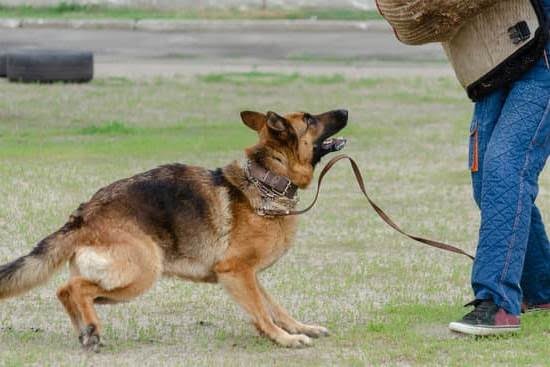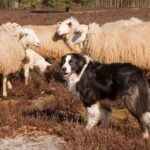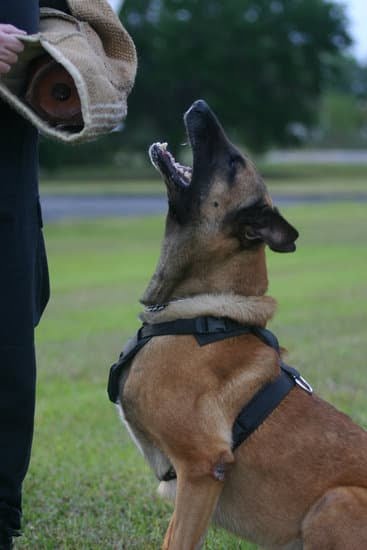Training a dog to detect cancer can be a powerful tool in early detection and treatment. The ability of dogs to sniff out various types of cancer has been well-documented, with numerous success stories highlighting the accuracy and reliability of their detection skills. In this article, we will delve into the world of canine cancer detection and explore the science behind how our four-legged friends are able to detect this deadly disease.
The sense of smell in dogs is truly remarkable, with studies showing that they can detect odors at concentrations as low as parts per trillion. This incredible olfactory ability is what makes them such effective cancer detectors, as they are able to sniff out subtle changes in scent that may indicate the presence of cancer cells.
Understanding the science behind a dog’s sense of smell is crucial in training them for cancer detection, as it allows us to tap into their innate abilities and harness them for a life-saving purpose.
When it comes to training a dog for cancer detection, selecting the right breed is essential. Certain breeds are more predisposed to excel in scent work due to their genetics and natural instincts.
By choosing a breed that has a strong sense of smell and a high level of trainability, you can set your dog up for success in their cancer detection training. Stay tuned as we explore the basic training techniques, advanced methods, and practical applications of utilizing dogs in cancer detection in the following sections.
The Science Behind a Dog’s Sense of Smell
Dogs have an incredible sense of smell, estimated to be tens of thousands to a hundred thousand times more sensitive than humans. This remarkable olfactory ability enables them to detect various scents, including those associated with cancer cells. So, how exactly do dogs use their noses to sniff out cancer?
To understand the science behind a dog’s sense of smell in detecting cancer, it is essential to know that when a person has cancer, their body releases specific metabolic waste products and volatile organic compounds (VOCs) that are detectable by trained dogs. Dogs have specialized olfactory receptors in their noses that can pick up on these unique scents, even in tiny concentrations.
Here are some key points that explain the science behind a dog’s sense of smell and how they can be trained to detect cancer:
- Dogs have around 300 million scent receptors in their noses, compared to only about 5 million in humans.
- The canine brain region dedicated to analyzing smells is proportionally much larger than that of humans.
- Dogs possess a second smelling device called the Jacobson’s organ, which helps them further analyze scents by flicking their tongues while sniffing.
By understanding the physiological and neurological aspects of a dog’s sense of smell, trainers can effectively teach dogs how to identify and alert to the presence of cancer through targeted training techniques.
Selecting the Right Dog Breed for Cancer Detection Training
When it comes to training a dog to detect cancer, selecting the right breed is crucial. Not all dogs are equally skilled at scent detection, and some breeds have a stronger innate ability to pick up on specific scents associated with cancer cells. Here are some dog breeds that are commonly used for cancer detection training:
- Labrador Retrievers: Known for their exceptional sense of smell and trainability, Labrador Retrievers make excellent candidates for cancer detection training.
- German Shepherds: These intelligent and versatile dogs are often used in various detection work, including sniffing out cancer cells.
- Golden Retrievers: With their gentle demeanor and keen sense of smell, Golden Retrievers have been successful in cancer detection studies.
It’s important to consider the specific characteristics of each breed before selecting a dog for cancer detection training. Factors such as energy level, temperament, and work ethic play a significant role in the success of the training process. Additionally, choosing a breed that is known for its strong sense of smell will increase the likelihood of your dog becoming an effective cancer detection companion.
Once you have chosen a suitable breed for cancer detection training, it’s essential to understand the unique qualities that make them well-suited for this type of work. Dogs have an incredible sense of smell, with some experts estimating that they can detect odors at concentrations as low as parts per trillion.
This ability makes them valuable partners in detecting subtle changes in odor associated with cancer cells. By selecting the right breed and understanding their olfactory capabilities, you can set your dog up for success in cancer detection training.
Basic Training Techniques for Teaching Scent Detection
Training a dog to detect cancer involves a combination of science, patience, and consistent practice. The first step in teaching scent detection is to establish a strong foundation in basic obedience training. This includes commands such as sit, stay, and come, which are essential for controlling the dog during scent detection exercises. It is important to start with simple tasks and gradually progress to more complex challenges as the dog gains confidence and skill.
One effective technique for training a dog to detect cancer is known as “scent imprinting.” This method involves introducing the dog to the specific scent associated with cancer cells early in the training process.
By repeatedly exposing the dog to this scent and rewarding them for indicating its presence, you can help them make the association between the scent and a positive outcome. Consistent repetition is key to building strong neural connections in the dog’s brain that will enable them to reliably identify the target scent.
Another important aspect of training a cancer detection dog is conducting regular training sessions in various environments to generalize their skills. Dogs need exposure to different settings, distractions, and conditions to ensure they can apply their detection abilities effectively in real-world scenarios. Additionally, maintaining a structured training schedule and keeping sessions short but frequent will help prevent burnout and keep the dog engaged and motivated throughout the learning process.
| Key Points | Data |
|---|---|
| Scent Imprinting Technique | Repeated exposure to specific cancer cell scents with rewards |
| Varying Training Environments | Practice in different settings for generalization of skills |
| Structured Training Schedule | Short but frequent sessions to maintain engagement |
Advanced Training Methods to Refine the Detection Skills
Once your dog has mastered the basics of scent detection training, it is time to move on to advanced training methods to further refine their skills in detecting cancer. One technique that can be used is introducing distractions during training sessions. This can help your dog stay focused and sharp even in the presence of other scents or noises. By gradually increasing the level of distractions, your dog will become more proficient at pinpointing the specific cancer-related odor.
Another advanced training method is to vary the locations where you conduct training sessions. By changing up the environment, you are challenging your dog to adapt to different scenarios and strengthen their detection abilities. This can also prevent your dog from becoming too reliant on a specific location or set-up, ensuring that they can detect cancer in various settings.
Additionally, incorporating mock scenarios during training can be beneficial in honing your dog’s detection skills. These scenarios can simulate real-life situations where your dog needs to identify a specific odor among others. This type of training helps improve your dog’s accuracy and response time when detecting cancer-related scents. It is important to continue reinforcing positive behavior through rewards and praise during these advanced training sessions to keep your dog motivated and engaged.
By implementing these advanced training methods, you are equipping your dog with the necessary skills to effectively detect cancer. Consistent practice and patience are key in refining your dog’s detection abilities, ultimately increasing their accuracy and reliability in detecting cancer early on. Remember that every dog learns at their own pace, so be sure to tailor the training techniques to suit your dog’s individual needs and capabilities.
Using Positive Reinforcement to Reward Correct Detection
Dogs have an incredible ability to detect various diseases, including cancer, through their remarkable sense of smell. Training a dog to detect cancer involves utilizing positive reinforcement techniques to reward correct detection. Positive reinforcement is a training method that involves rewarding desired behaviors to increase the likelihood of those behaviors being repeated.
When training a dog to detect cancer, it is essential to start with basic scent detection exercises. This involves associating a specific scent with a reward, such as a treat or playtime. By consistently rewarding the dog for correctly identifying the target scent associated with cancer, you can reinforce this behavior and encourage them to continue detecting the scent accurately.
As the dog progresses in their training, more advanced techniques can be introduced to refine their detection skills further. This may include increasing the difficulty of the scent detection tasks, varying the environments in which training takes place, and gradually reducing the intensity of the scent concentration for more challenging detection scenarios. Through consistent practice and positive reinforcement, dogs can become proficient in detecting cancer and other diseases with high accuracy.
| Training Techniques | Description |
|---|---|
| Basic Scent Detection Exercises | This involves associating a specific scent with a reward to reinforce correct identification. |
| Advanced Training Methods | Includes increasing difficulty levels and varying environments to refine detection skills. |
| Consistent Practice | Repetition and positive reinforcement are key in training dogs for cancer detection. |
Practical Applications of Dogs in Cancer Detection
Dogs have an incredible ability to detect cancer in humans, often before traditional diagnostic methods can identify the disease. This remarkable skill has led to practical applications of using dogs in cancer detection across a variety of settings. From medical facilities to research institutions, dogs trained for scent detection are making a significant impact in the fight against cancer.
Medical Facilities
Many medical facilities are now incorporating trained cancer detection dogs into their diagnostic procedures. These specially trained dogs can sniff out specific odors associated with various types of cancer, such as lung, breast, and skin cancer. By utilizing these canine companions, healthcare providers can receive early warnings of potential cancers in patients, allowing for earlier intervention and treatment.
Research Institutions
In addition to medical facilities, research institutions are also exploring the potential of using dogs in cancer detection studies. By working alongside scientists and researchers, cancer detection dogs play a crucial role in developing new diagnostic methods and technologies. Their keen sense of smell and accuracy in detecting cancerous cells provide valuable insights that can ultimately improve early detection rates and patient outcomes.
Community Outreach Programs
Furthermore, some organizations are using trained cancer detection dogs in community outreach programs to raise awareness about the importance of early cancer detection. These programs often involve public demonstrations where the dogs showcase their impressive skills in identifying cancer odors. By educating the public about how these canine companions can help save lives through early detection, more people may be inclined to seek regular screenings and check-ups for early signs of cancer.
Case Studies of Dogs Successfully Trained to Detect Cancer
Dogs have an incredible ability to detect subtle changes in scent, making them valuable partners in the fight against cancer. Through rigorous training and dedication, many dogs have been successfully trained to detect various types of cancer in humans. These case studies serve as a testament to the potential that dogs hold in early cancer detection and how they can significantly impact patient outcomes.
One remarkable case is that of Frankie, a rescue dog trained by a nonprofit organization to detect thyroid cancer in urine samples. Frankie’s accuracy rate was incredibly high, demonstrating his keen sense of smell and ability to pinpoint the presence of cancer cells. His work not only provided early detection for many individuals but also inspired further research into canine cancer detection techniques.
Another inspiring story is that of Tucker, a Labrador Retriever trained to detect early-stage ovarian cancer through breath samples. Tucker’s success rate was exceptional, leading to the diagnosis of several cases that may have otherwise gone undetected until later stages. This case underscores the importance of utilizing dogs in cancer detection efforts and showcases their potential for saving lives through early intervention.
Overcoming Challenges in Training a Dog for Cancer Detection
Training a dog to detect cancer can be a challenging but rewarding endeavor. Canine cancer detection has shown promising results in various studies, showcasing the potential of dogs to assist in early cancer detection. However, there are certain challenges that trainers may encounter along the way.
Understanding Individual Differences
One of the primary challenges in training a dog for cancer detection is understanding and working with each dog’s individual differences. Different dogs have varying levels of sensitivity to scents and different learning speeds. It is essential for trainers to adapt their training methods to suit the specific needs and characteristics of each dog in order to achieve optimal results.
Distractions and False Alerts
Another common challenge in training dogs for cancer detection is dealing with distractions and false alerts. Dogs are easily distracted by their surroundings, so it is important to create a controlled environment during training sessions. Additionally, dogs may sometimes give false alerts, indicating the presence of cancer when there is none. Trainers must work on refining the dog’s detection skills to reduce the occurrence of false alerts.
Persistence and Patience
Training a dog to detect cancer requires persistence and patience from both the trainer and the dog. It takes time for dogs to learn and master scent detection techniques, so consistent training sessions are crucial. Trainers must remain patient throughout the process, understanding that progress may take time. By persevering through challenges and setbacks, trainers can help their dogs develop reliable cancer detection skills that can potentially save lives.
Resources for Further Learning and Training Opportunities in Canine Cancer Detection
In conclusion, training a dog to detect cancer is a fascinating and potentially life-saving endeavor that harnesses the incredible power of a canine’s sense of smell. By understanding the science behind a dog’s olfactory abilities and selecting the right breed for detection training, individuals can embark on this rewarding journey to help in the fight against cancer.
Basic training techniques, such as introducing scents and positive reinforcement, form the foundation for teaching dogs to recognize specific cancer odors.
As handlers progress in their training efforts, advanced methods can be implemented to further refine a dog’s detection skills. From distinguishing between different types of cancers to detecting cancer at varying stages of development, dogs have shown remarkable capabilities in this field. Real-life case studies underscore the success stories of dogs who have been trained to accurately detect cancer, highlighting the potential impact these animals can have in early diagnosis and treatment.
Despite the challenges that may arise during training, perseverance and dedication can lead to breakthroughs in a dog’s ability to detect cancer. By utilizing resources for further learning and exploring training opportunities specifically tailored for canine cancer detection, handlers can continue to hone their skills and make significant contributions in this vital area of research.
The bond between humans and dogs is truly remarkable, especially when it comes to working together in the fight against one of our most formidable foes: cancer.
Frequently Asked Questions
How Do Dogs Act When They Smell Cancer?
Dogs have an incredible sense of smell that allows them to detect different diseases, including cancer, through changes in a person’s odor. When dogs encounter the scent of cancer, they may act differently by sniffing, licking, or showing increased interest in that specific area of the body.
Which Dogs Are Best at Detecting Cancer?
Various breeds have been trained to detect cancer effectively, but some studies have shown that certain breeds like German Shepherds, Golden Retrievers, and Labrador Retrievers excel in this task. These breeds are often chosen for their intelligence, trainability, and strong hunting instincts.
How Accurate Is the Cancer Sniffing Dog?
Cancer-sniffing dogs have shown impressive accuracy rates in studies conducted to test their abilities. Some research has reported accuracy levels as high as 98% when detecting various types of cancer through scent samples. However, like any diagnostic tool, these dogs may have limitations and should be used in conjunction with other medical tests for confirmation.

Welcome to the blog! I am a professional dog trainer and have been working with dogs for many years. In this blog, I will be discussing various topics related to dog training, including tips, tricks, and advice. I hope you find this information helpful and informative. Thanks for reading!





